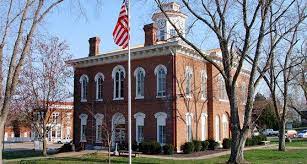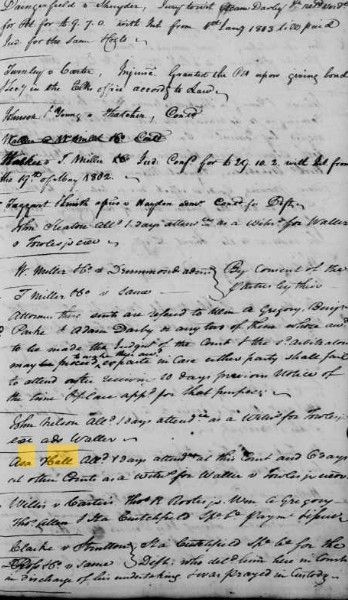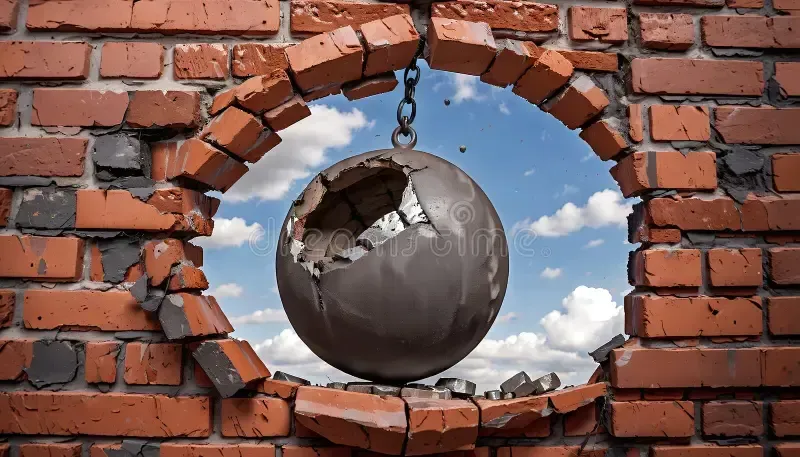What Are You Missing?
A Quick Guide to Courthouse Research
In today’s digital environment, it is my experience that the vast majority of genealogists use online sources almost exclusively. Yes, Ancestry is an excellent resource for things like census records and even at times state level records. FamilySearch.org has a wonderful collection of primary source records, though almost all of them are unindexed and cumbersome to use. You can occasionally find transcriptions of local records from a courthouse online. Yet, as great as they are, these collections only scratch the surface still as to what is available.
One of the most underused resources are those available at the local county courthouse. Here is a brief overview of the types of things you might find at the local courthouse where you ancestor resided.
1) Births/Deaths – In some states (such as Illinois), births and deaths were recorded at the county level. While copies of the records may be sent to the Vital Statistics offices at the state capital, the originals were often kept at the county level. In Kentucky and Missouri, many are available online. In Illinois, all you get online is an index. The originals are usually still held at the county level. I am presently transcribing the death records for Pope County, Illinois from the death register which is available up to 1914 on FamilySearch. However, FamilySearch only has the register. I will be supplementing my transcription by examining the original death records found ONLY at the local courthouse. There are differences! Example – in the death register and the online index, it may state the ancestor was born in Tennessee, BUT on the original death certificate, it might state he was born in Monroe County, Tennessee. Which of these would you prefer to know?
2) Marriage Records – Marriages were generally recorded at the county level. Sometimes indexes are available online BUT the indexes do not tell the whole story. When examining the original records, you can often find items such as the consent of a parent to the marriage, get the original signature of an ancestor, and even learn the name of the witnesses and bondsmen (often relatives). I have many times even been able to use the name of the local official who performed the ceremony to lead me to more records – such as what church they were affiliated with or where in the county they resided.
3) Land Records – All sorts of land records are found at the local courthouse. Deeds, mortgages, liens, releases, and real estate tax records, to name a few. Never underestimate the value of land records in your research! For an example of how I found unknown parentage using deeds, see The Sample Research Report on John Jackson DIXON on the Backstory Bloodhound webpage. Land records can not only help you reconstruct neighborhoods and analyze migration patterns but often can directly provide relationships and name heirs. The ways they can help are tremendous.
4) Probate Records – Sometimes you can find wills online and a few states have begun to place probate books online. However, the really good stuff is in the loose probate packets often found in the county courthouse. When someone died intestate, an administrator was named by the court and was responsible for determining the assets of the estate (usually an inventory), collecting any monies owed, paying the debts of the deceased (usually listed) and paying out proceeds to the heirs, often named. Often a sale was held and a list of the sale items and who bought what can be revealing. For example, who got the family Bible? Who bought personal items? Often these would be relatives. I have found sometimes an individual who died had some sort of financial relationship with someone in their previous place of residence – BINGO! – you have just learned where they came from! I cannot count the number of times this has helped me track migration patterns.
5) County Court Minutes – Each county court kept a journal of the minutes of its proceedings. Within these one may discover one’s ancestor being appointed to a jury, overseeing or working on a road, getting contracted to work on a public facility such as the courthouse or jail, or even petitioning the court about a specific matter. Perhaps he was a justice of the peace. These are the kinds of records that put “flesh on the bones” of our ancestors. Road lists also help reconstruct neighborhoods.
6) Court Records – Each state established various types of courts at the county level. Each court kept records of its decisions but what are more revealing when they survive are the loose records of the cases. How would you like to find an affidavit from your ancestor who testified in a court case? Or perhaps your ancestor was the plaintiff or defendant? This is where the good stuff is!
7) Tax Lists – These sound BORING but when they exist, they offer tremendous potential. They place people at a specific place at a specific time which is what we need to do as genealogists. In addition, they can help sort out people with the same name. Tax lists give you an idea of the relative wealth (or lack thereof) of your ancestor. They even can name relationships. Many brick walls have been shattered with the use of tax records. In Kentucky and Virginia, these are kept year by year and many can be found on FamilySearch.org – though they are unindexed. In other locations (such as Illinois), many are at IRAD facilities or at the local courthouses when they survive.
8) Guardianships – What a gold mine these can be! When someone with assets died, usually a guardian had to be appointed by the court. These records often give valuable information about not only the deceased but about the minor children left behind. Imagine finding the exact date of birth of your ancestor in 1832 in a guardianship file! Often these exist as loose records in the courthouse.
The list of potential records in the local courthouse goes on and on! Divorce records (which are after all, court proceedings), Coroner’s Records, Insanity Files, Voter lists, Naturalization records, Soldier Discharge records, criminal cases, and more! I even once found an account book belonging to an ancestor who was a doctor in a local courthouse – before finding that, I had NO IDEA he was a doctor!
A source (though dated) I highly recommend for Courthouse Research is Christine Rose’s Courthouse Research for Family Historians: Your Guide to Genealogical Treasures, published in 2004.
So I hope I have convinced you not to overlook the valuable courthouse records which can add so much to your family history.
If you can’t make it to the local courthouse, I am available to do courthouse research for you in the southern Illinois, western Kentucky, and southeast Missouri counties listed on my website – Backstory Bloodhound. I can be contacted at rick@backstorybloodhound.com
FYI - The image here is of the historic Johnson County courthouse in Vienna, Illinois built 1869-1871. Plans are now underway to construct a new courthouse.





